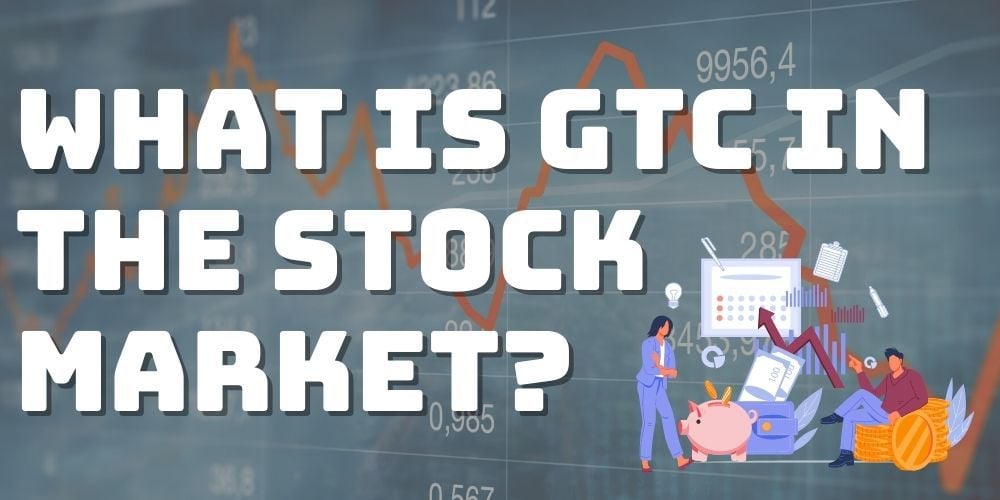Investors are looking at the best way to set their buy or sell trades in the market, and there is a lot of interest in Good Til’ Canceled (GTC) orders.
So, what is GTC in the stock market, and how does it help an investor? We explain all this below.
What Is GTC in the Stock Market?
A Good Til’ Canceled (GTC ) order refers to either a buy or sell instruction that lasts until it is either executed or gets canceled.
Brokers typically set limits to the length of time for which GTC orders can persist, even though the name suggests otherwise.
Since this cancellation period varies from one brokerage house to another, investors should be alert and check with their firm for details.

But how does a GTC order work in practice? When should you use it, and what caveats do you need to remember? We cover all of this in the sections below.
We also take you through the difference between GTT and GTC orders and explain the workings of a GTC limit order, so stay tuned.
How Does a GTC Order Work?
As explained above, a Good Til’ Cancelled order will (theoretically) continue to exist in the system as long as it is either executed or explicitly canceled.
This type of market instruction stands in contrast to day orders, which only last till the end of the trading period on the day they were placed.
As soon as the market closes, they are automatically canceled (we will cover this in greater detail later on).
In practice, Good Til’ Canceled orders do not last forever.
There is a cost associated with maintaining such orders in the system, which the brokerage firm has to bear (more on this in the next section).
Hence, most brokers put a limit on how long GTC orders are allowed to persist, which is 30-90 days in most cases.
The benefit of having GTCs is that the investor does not need to check the stock’s market price daily.
They can place the order with a certain expected price point, which will execute automatically when the share reaches that level.
For example, let’s say that you own stocks of company XYZ, which were bought at $30.

You believe the share has the potential to reach $35, and the $5 profit is a good place to exit XYZ.
Simply set up a GTC sell order to offload the shares at $35.
Now, whether the security reaches this price after five days or ten, your instruction will immediately execute, and the profit will get booked.
You don’t need to keep watching the price every day.
Are GTT and GTC the Same?
No, Good Till Triggered (GTT) is different from Good Til’ Canceled.
These orders are not placed until a specific trigger condition is reached. After the trigger happens, they work the same way as GTC orders.
Some brokerage firms offer GTTs instead of GTCs because they are cheaper to work with.
GTTs are designed not to get placed until the stock reaches the condition specified in the order.
On the other hand, GTCs are canceled at the close of every day, and the same order needs to be created the next day again.
This extracts a high cost from the broker for simply maintaining one order.
In the previous instance, a GTT order can be placed with a trigger price of $34.5.
The order will not be operationalized as long as the stock is at a lower price than $34.5, which saves a lot of effort for the broker.
Once the $34.5 point is breached, the order comes into effect, and if the limit price ($35) is also reached, it will get executed.
GTT orders also have an expiry period, but it is usually longer than GTCs (it could be as long as a full year).
What Is a Day Order in Trading?
A day order is the default mode in which all buy and sell orders operate in stock markets unless specified otherwise.
It simply means that the order is only valid for the day it is placed.

If the order does not go through during regular trading hours, it expires immediately on the close of trade. There is no carry forward to after-hours or next-day trading.
Are GTC or Day Orders Better?
Day orders are better for active traders who like to reset their positions daily. GTCs are better for investors who are not regular market watchers.
Since a day order becomes defunct at the end of trading, there is no need to “clean house.” You can start with a blank slate and create new positions in the following trade period.
On the other hand, GTC orders will stay in the system until canceled or the brokerage firm’s time limit is not breached.
If your desired conditions are met, it will execute automatically and book profit for you.
Hence, they are great for investors who don’t have the time to keep checking how their assets are doing.
One word of caution about “executing automatically.” This key feature of a GTC order is also its biggest weakness.
A trader might create a GTC order with certain price expectations in mind. But if extreme volatility pushes the price past that level and brings it back, there might be a problem.
For example, consider a share trading at $30 with a GTC stop-loss sell order set for $25.
If the stock suddenly jumps below $25 and bounces right back, the order will execute, and the share will go for a loss.
The trader is left in an unfortunate position where they sold low, but the market brought the price back up. Hence to square off, they need to now buy at a loss.
It is important to regularly keep an eye on your GTCs to avoid such scenarios of sudden market volatility.
What Is a GTC Limit Order?
A limit order sets a floor level on a sell order price and a ceiling on a buy order.
In this way, it is different from a market order, which gets executed at the current price and does not offer any control to the buyer or seller.
A Good Til’ Canceled limit order combines the attributes of these two. It remains in the system till explicitly canceled and also carries a limiting price for the instruction.
On the other hand, day-limit orders expire as soon as the market closes.

Let’s explain GTC limit orders with an example. A trader owns shares of a particular company currently trading at $30.
They are optimistic about the stock price moving up in the next few days, creating a GTC sell order with a limit price of $35.
This means the shares will be sold only if their value reaches $35, not before that.
Since it is a GTC order, it will stay live in the system till explicitly canceled, as explained earlier.
If the trader’s instincts were right, and the share reaches $35 or higher in the next few days, market makers will snap it up automatically.
When Should I Use GTC in Investing?
When combined with limits, as explained above, GTC orders are a great way to sell shares at a price higher than the current one or buy them at a lower value.
They let the trader set desired price levels and execute automatically when the level is reached with no further input required.
Investors who do not have the time to actively monitor trades can create such instructions and hence are saved from checking prices daily.
Will GTC Orders Fill After Hours?
No, GTC orders will work only during regular trading but not after-hours trading.
It will not get triggered if the share price reaches the GTC order price after the markets close.
It will only work if the price continues at that level in the next day’s trade.
Can GTC Orders Be Cancelled?
Yes, they can be canceled. It is prudent to keep evaluating market conditions and replacing your Good Til’ Canceled orders with new ones.
For example, if a trader creates a GTC limit order to sell a share when it reaches $35 from $30, they might have a certain expectation on its highest possible value.
But if the stock does exceptionally well and reaches $34, they might rethink its potential.
In such cases, canceling the old one and creating a new GTC order with a limit of (say) $38 to capitalize on the higher price might be worth looking into.
Final Thoughts
GTC orders let those investors who cannot check the markets regularly set up their positions and have them executed automatically.
They stand in contrast to day orders, which get canceled as soon as the market closes for the day, and need to reset the next day again.
A GTC instruction is an excellent way to set specific price points and wait until the condition is met.


 Tags:
Tags:










